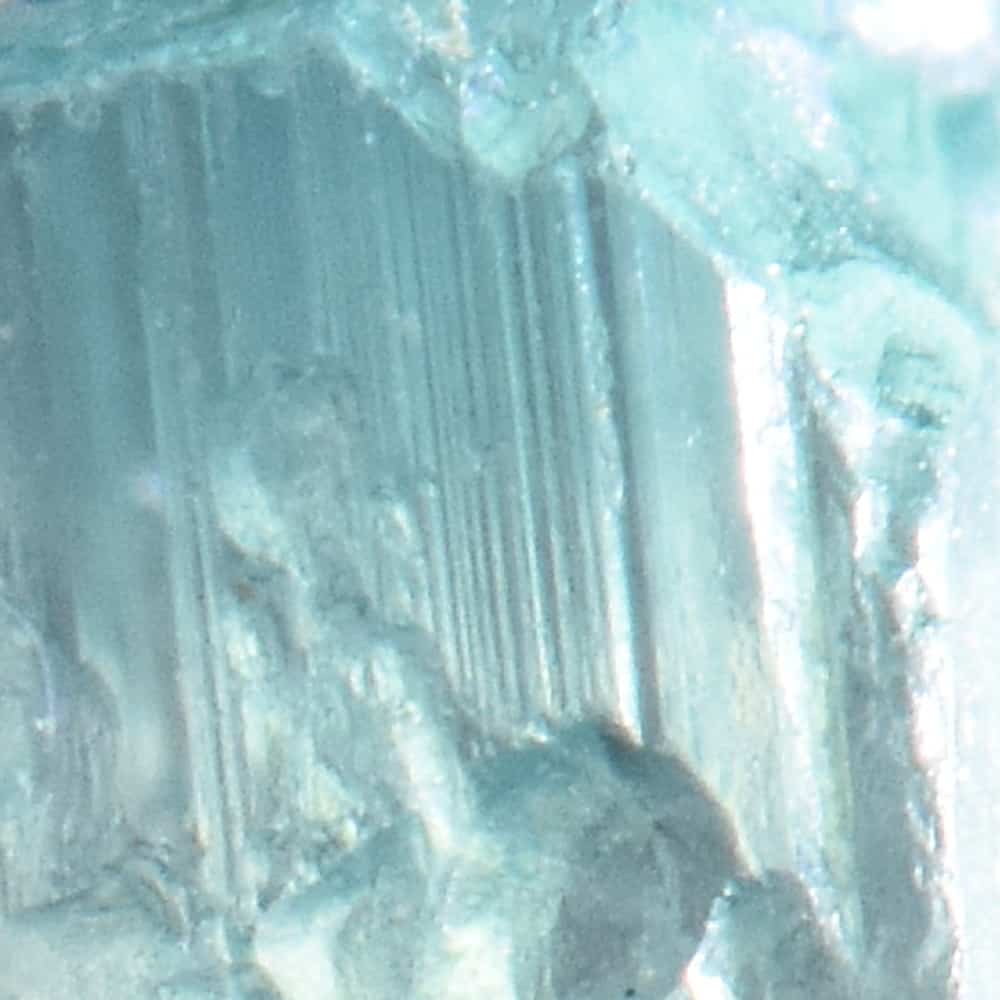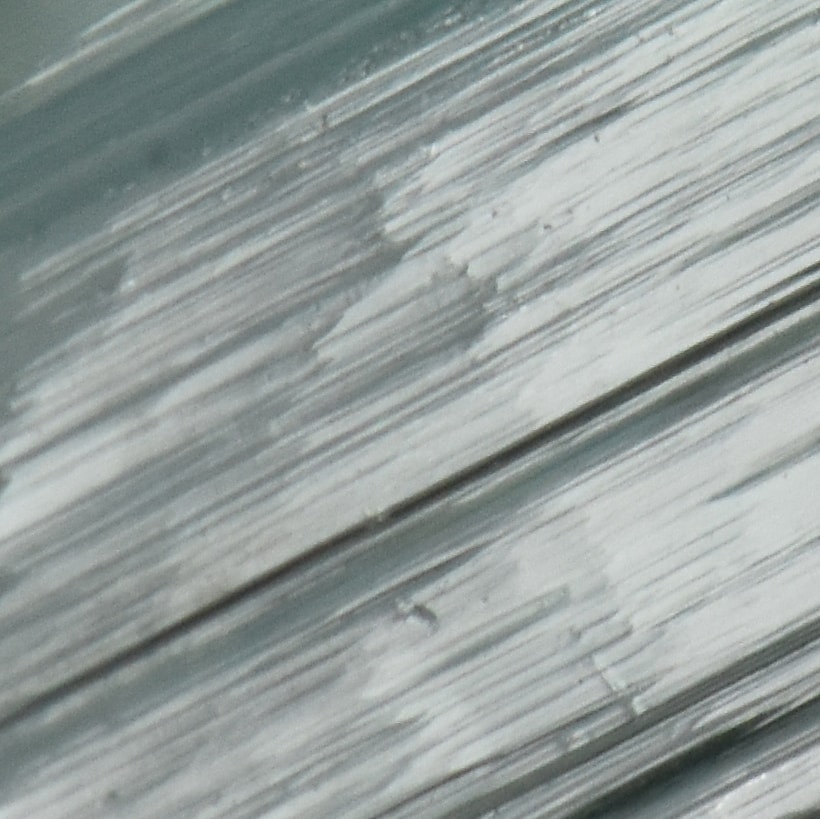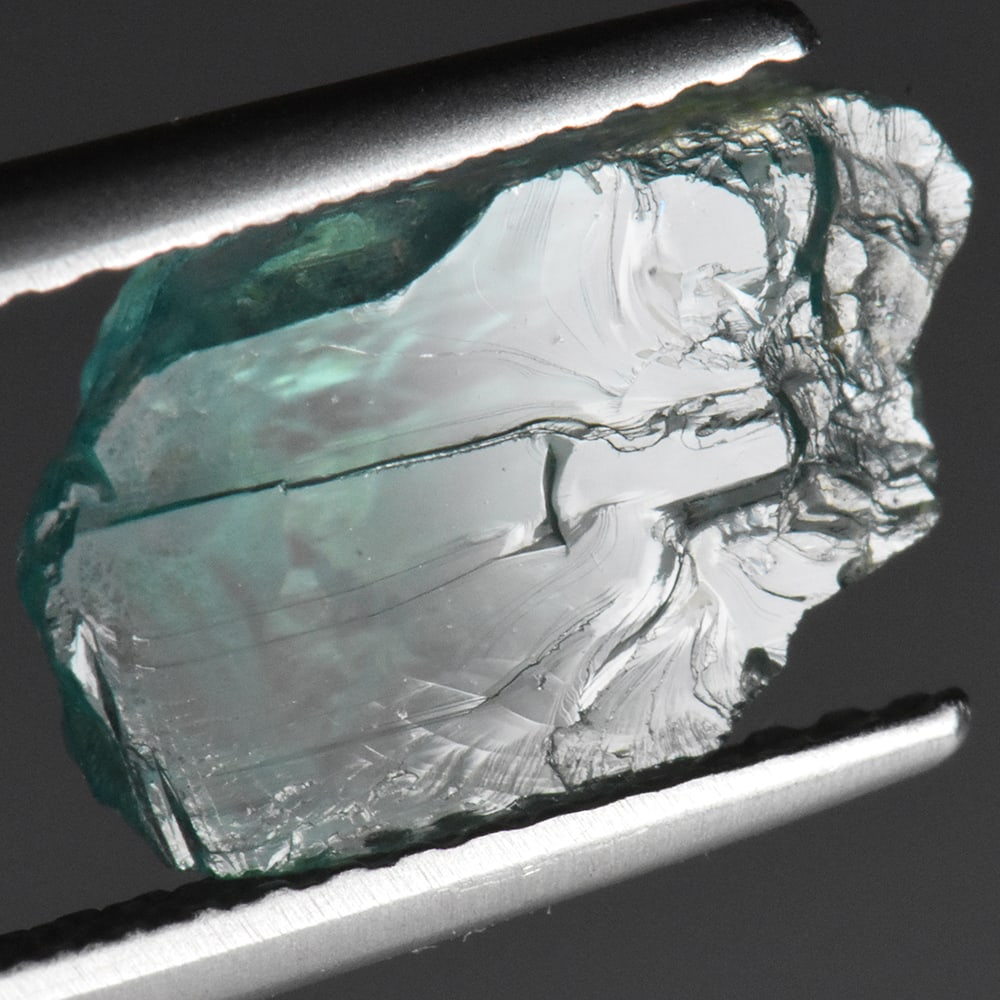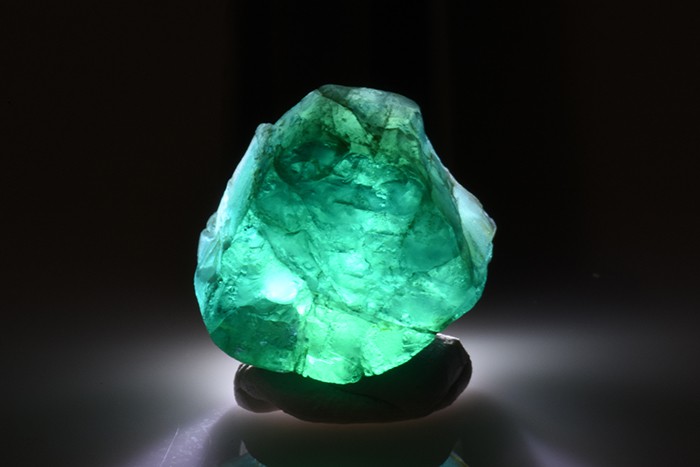The Identification of Rough Gem-Quality Grandidierite
In December 2016 and January 2017 a rich pocket of large gem-quality Grandidierite was found in the Tranomaro region of Southern Madagascar. What set this seam of Grandidierite apart from the 2015 and early 2016 finds, was its clean genuine gem-quality crystals found.
Called by some the “World’s Rarest Gem”, the previous year’s finds of Grandidierite were characterized by poor clarities. What would of been cabochon quality in any other gem-type, was faceted and placed up for sale caching in on it’s status as an extremely rare gem.
The newer find, had the full range of previously seen low clarities and colors, however, the clean gem material found was absolutely distinctive, and was in larger sizes. Whether more of this material will be unearthed remains to be seen. Having spent much of the last about ten days working with this material and struggling to identify rough grandidierite gemstones that we had never worked with before, by eye without the aid of instruments, clear characteristics emerged that were different from its larger, includ- ed cabochon-grade relative, that may be of use to both purchasers and gemologists.
1. Typical External Surface Features of Rough Grandidierite
1.1 Striations – long striations going up the crystals were clearly visible as shown, or partially in patches, in every single crystal examined.



1.2 Surface Cleave Planes – many grandidierite crystals have been cleaved, leaving bright lustrous planes on either a whole or partial side of the crystal. The planes frequently show “steps”, whereby the cleav- age changes plane by stepping down a bit.


1.3 Concave Craters – a common feature on the outside of gem-quality grandidierite crystals. Probably due to the individual deposit conditions, rather than the crystal’s latent potential to concave-crater. Eitherway, they are frequently seen.
1.4 External Features Not Observed
Conchoidalism – Picking through parcels, we noticed a lack of conchoidal fracturing on the surface of the gems.
2 – Pleochroism & Color
2.1 Strongly Pleochroic – we didn’t see many pieces with weak pleochroism at all – only the very pale colored crystals. We also noticed there was never yellow or brown present as the pleochroic colors†.
† the yellow-greens shown on the microscopy pictures on page 4 are under a yellow fiber optic. Some pieces of grandidierite do seem to have color shift and seem be quite tricky to get true color on some camera CCD’s when using artificial light.)
3. WARNING – Salted Parcels
Clean gems of this value, are inevitably going to attract some of the games and tricks common to the world of rough gemstones. As we got to know the gem, we picked out stones that simulate Grandidierite quite well, however these simulants caught us off guard in the first two days.
3.1 The Sneaked-In Simulants
#1. blue-green apatite: identified by its lower luster, conchoidal tendencies and less pleochroism. #2. green tourmaline: a tricky one and identified by its sometimes olive pleochroismNB – I would’nt be surpised if indistinct Aquamarine crystals were also found in future parcels.
4. Spectroscopy & Absorption
Kind of weak and indistinct: 1 line visible in one direction of orientation of the stone at 479nm, and by re-orientating the stone to its other pleochroic color direction, a second weaker line visible to the right of the 479 line was sometimes (but not always) visible.
Microscopic Inclusions in Gem-Quality Grandidierite
This report is intended as a rough guide
to the new and relatively undocumented gem-quality grandidierite. Accurate at
the time of writing, exceptions to the “guides” contained in this report will be found, and people use this information at their own risk.
Simon Bruce-Lockhart FGA, DGA, EG. Chanthaburi, Thailand.
9th March 2017.
Special thanks to Kevin Timmons

Leave a reply